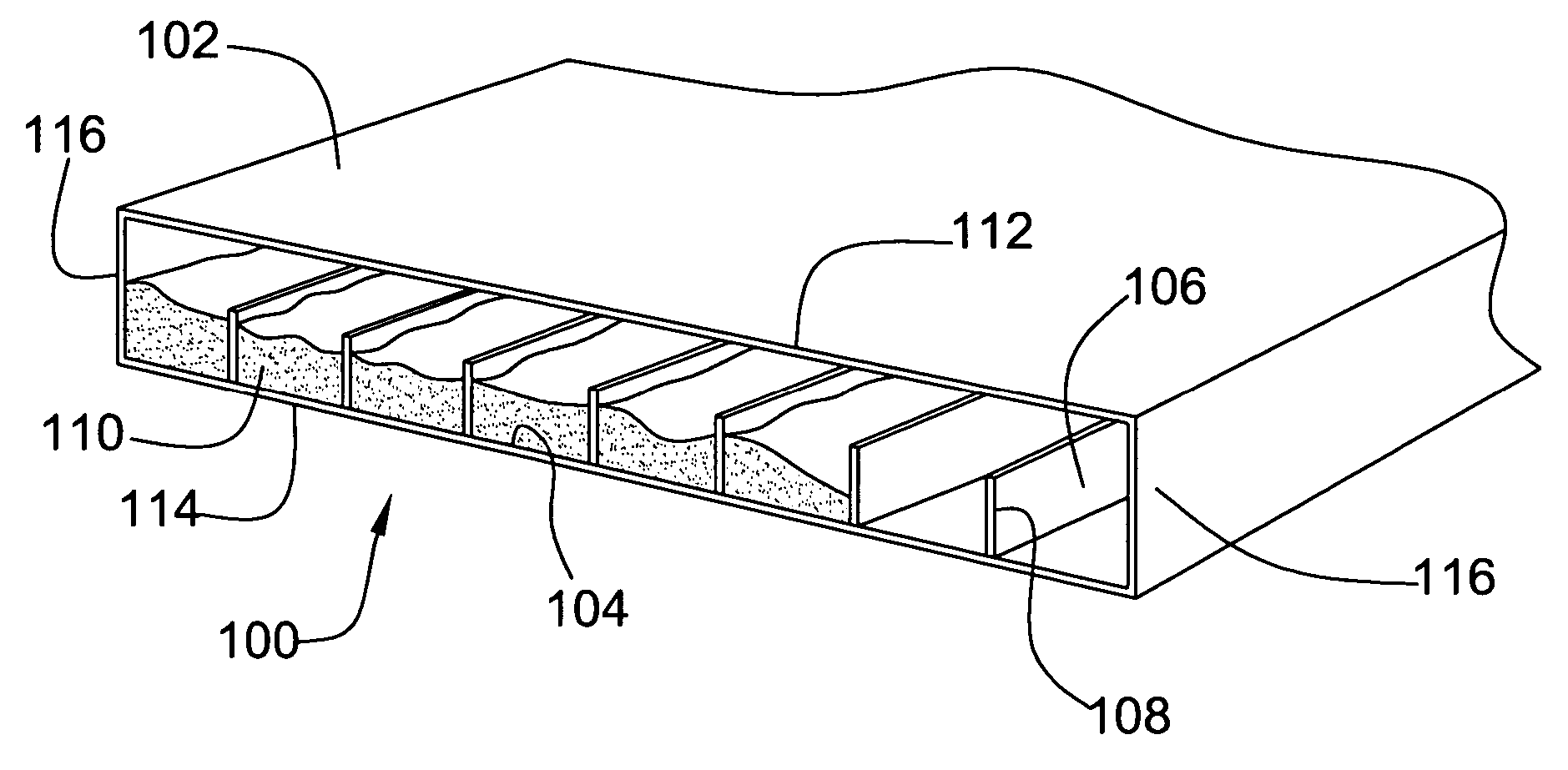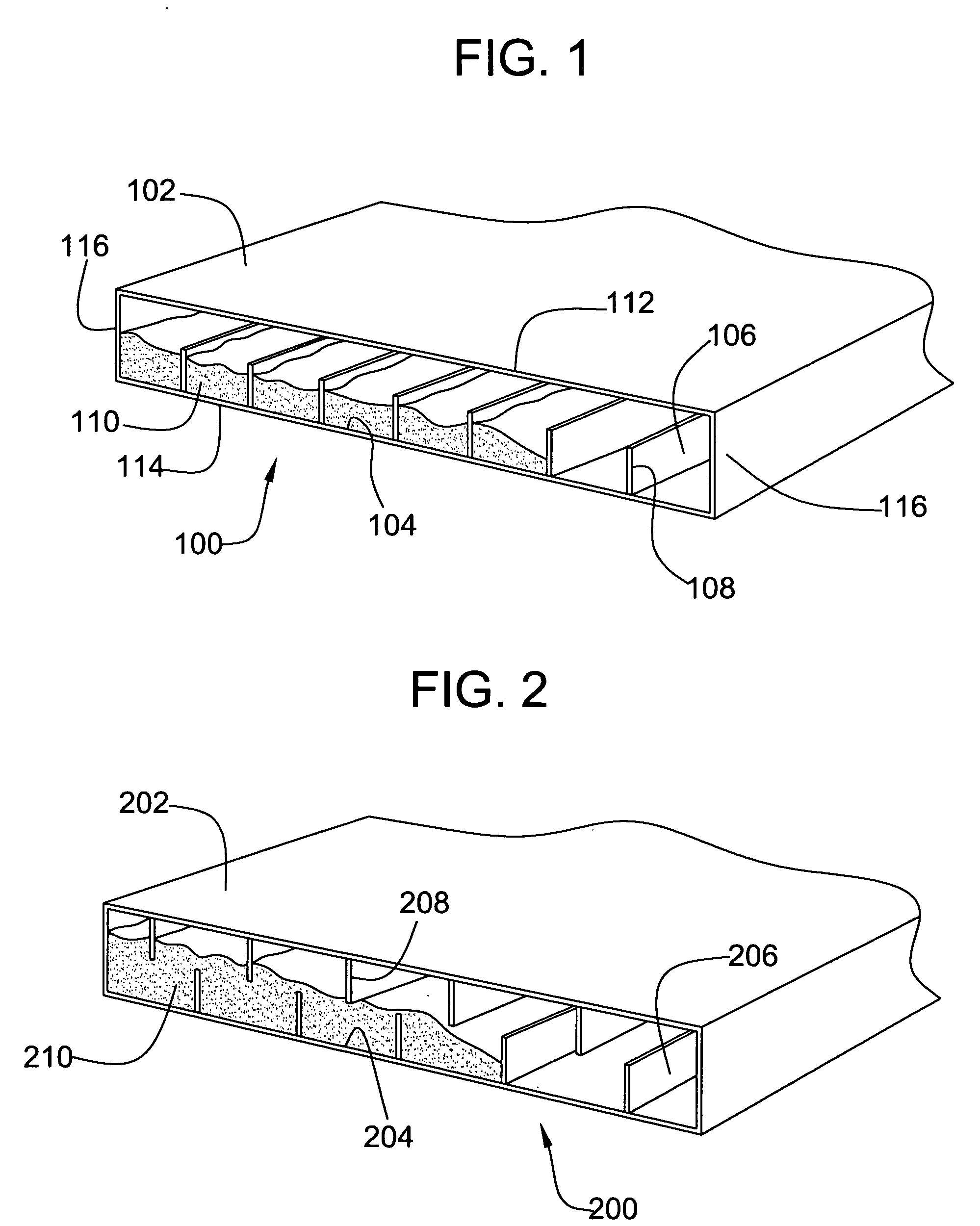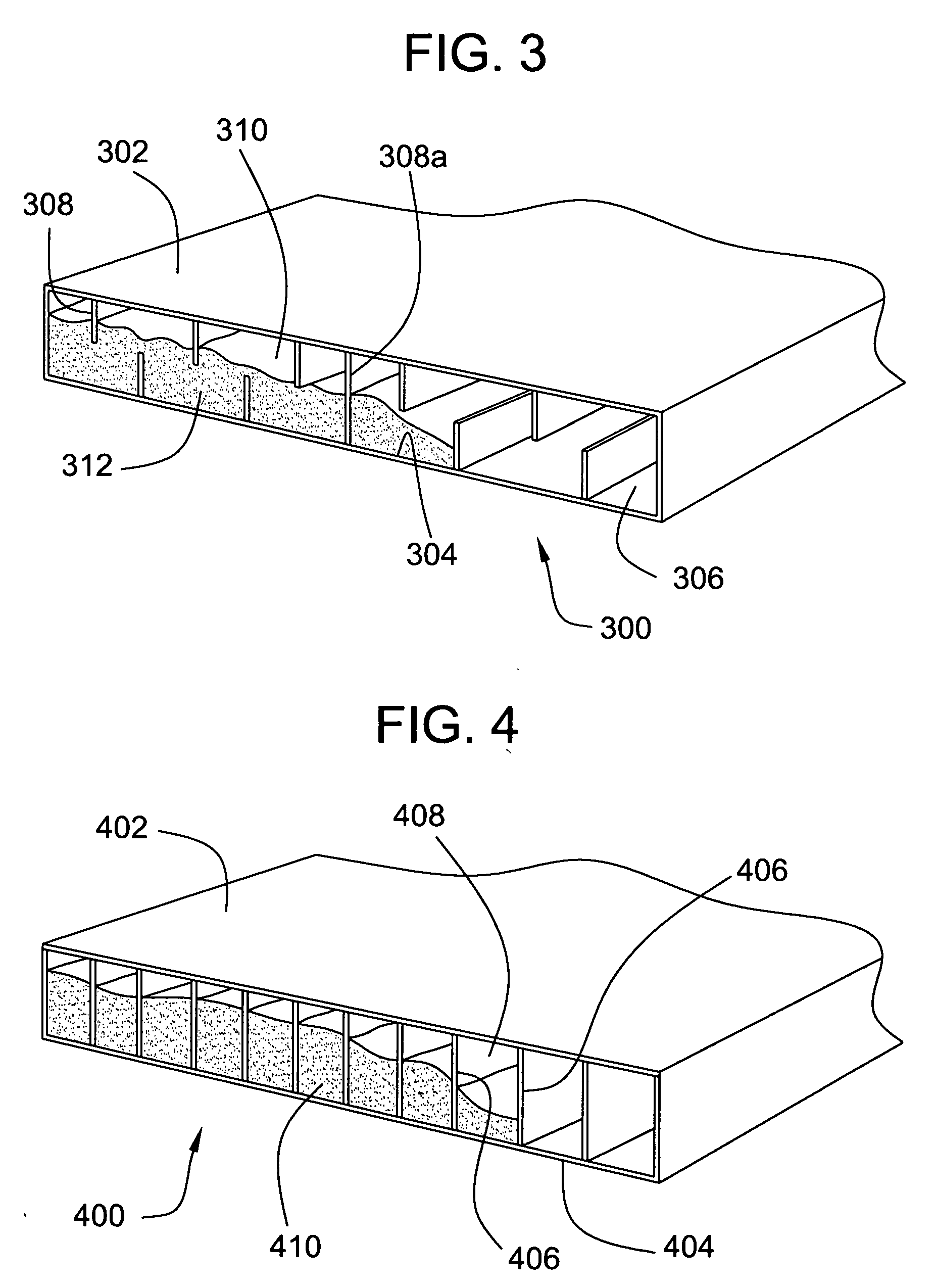Insulated panel and glazing system comprising the same
a technology of insulated panels and glazing systems, applied in the direction of thin material processing, construction, building components, etc., can solve the problems of increasing the cost of maintaining the climate within the building at a level, and affecting the insulating effect of the building
- Summary
- Abstract
- Description
- Claims
- Application Information
AI Technical Summary
Benefits of technology
Problems solved by technology
Method used
Image
Examples
example 1
[0054] This example demonstrates the improved U value (i.e., lower thermal transmission) exhibited by a glazing panel according to the invention relative to other glazing panels that do not comprise hydrophobic aerogel particles. The corrected U values for eleven similar translucent glazing panels were measured. Each of the glazing panels comprised a first polycarbonate sheet, a second polycarbonate sheet, and a plurality of supporting members disposed between the first and second polycarbonate sheets to define a plurality of channels between the first and second polycarbonate sheets.
[0055] Glazing Panels 1A (comparative) and 1B (invention) measured approximately 10 mm in thickness, and Glazing Panel 1B (invention) comprised hydrophobic aerogel particles disposed within the channels of the panel.
[0056] Glazing Panels 1C-1E measured approximately 16 mm in thickness and further comprised a third polycarbonate sheet disposed between and parallel to the first and second polycarbonate ...
example 2
[0061] This example demonstrates the improved light diffusing properties (i.e., higher haze value) exhibited by a glazing panel according to the invention relative to other glazing panels that do not comprise hydrophobic aerogel particles. Six similar translucent glazing panels (Glazing Panels 2A-2F) were measured to determine the haze value of each panel. Each of the glazing panels comprised a first polycarbonate sheet, a second polycarbonate sheet, and a plurality of supporting members disposed between the first and second polycarbonate sheets to define a plurality of channels between the first and second polycarbonate sheets. Glazing Panels 2A (comparative) and 2D (invention) measured approximately 6 mm in thickness, Glazing Panels 2B (comparative) and 2E (invention) measured approximately 10 mm in thickness, and Glazing Panels 2C (comparative) and 2F (invention) measured approximately 20 mm in thickness. The channels of Glazing Panels 2D-2F (invention) were filled with hydrophob...
example 3
[0064] This example demonstrates the improved U value (i.e., lower thermal transmission) of a glazing system according to the invention relative to other glazing systems. The U values for four similar glazing systems were measured. Each of the four glazing systems (Glazing Systems 3A-3D) was constructed using two similar U-shaped glass elements. The glass elements comprised a base, which measured approximately 262 mm in length, and two legs perpendicularly extending from the base, which legs measured approximately 60 mm in length. The glass from which each element was constructed was approximately 7 mm thick. In order to prevent contact between the legs of one element and the inside surface of the base of the other element, a polymeric gasket was placed on the distal end of each leg. The two U-shaped glass elements were arranged so that the legs of each glass element projected from the base of the glass element toward the base of the other glass element, thereby defining a cavity be...
PUM
 Login to View More
Login to View More Abstract
Description
Claims
Application Information
 Login to View More
Login to View More - R&D
- Intellectual Property
- Life Sciences
- Materials
- Tech Scout
- Unparalleled Data Quality
- Higher Quality Content
- 60% Fewer Hallucinations
Browse by: Latest US Patents, China's latest patents, Technical Efficacy Thesaurus, Application Domain, Technology Topic, Popular Technical Reports.
© 2025 PatSnap. All rights reserved.Legal|Privacy policy|Modern Slavery Act Transparency Statement|Sitemap|About US| Contact US: help@patsnap.com



